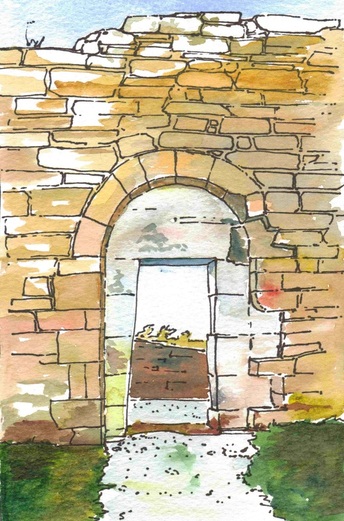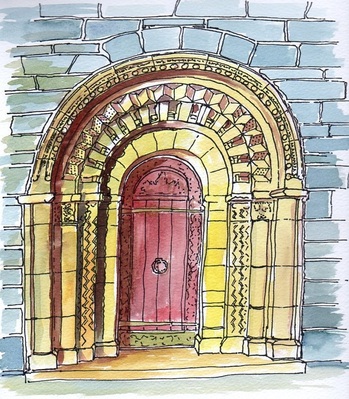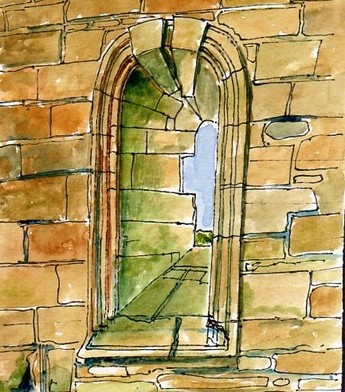Hiberno Romanesque
|
By the eleventh century, the influence of Roman architecture had filtered into the region and the Romanesque Style, which displaced openings with flat heads in favour of ones with arched heads, started to be adopted. A good example of this change is the entrance door to Banagher church, Co. L'derry, where the inside of a traditional entrance door with flat head and angled sides is a perfect arch.
Over the next 100 years the style became more decorative with doors becoming flanked by columns and receding towards the entrance with decorative arches above. A good example is the twelfth century door built into Kimore Cathedral in Co Cavan. In some buildings ‘blind arcading’-the use of arches as a decorative form on walls -was also adopted. Windows also became more decorative with internal surrounds or architraves often found around round headed windows as in the example illustrated in the twelfth century chancel extension of Banagher church. By the mid twelfth century reorganisation of the church along continental lines into dioceses and the introduction of continental monastic orders resulted in the construction of some larger church buildings in the style. Muircertach MacLoghlainn, High King of Ireland, was present at the dedication of the first Cistercian House in Ireland at Melifont Co. Meath in 1157. Seven years later work commenced on the now gone Tempull Mor (Great Church) in his powerbase of Doire Columbkille (Derry). The great cathedral of Armagh, the ecclesiastical capital of Ireland, also appears to have been rebuilt, or had major repairs, during this period (1125). Other Ulster Cathedrals, such as Downpatrick would have been in a similar style. The Tempull Mor is now gone and Armagh Cathedral has been significantly altered in the intervening period. It is now in the gothic styled underwent significant alterations in the nineteenth century. |
|
Door, Banagher Church Co. L'derry
Door, Kilmore Cathedral, Co Cavan.
Romanesque window, Banagher, Co L'derry.
|




